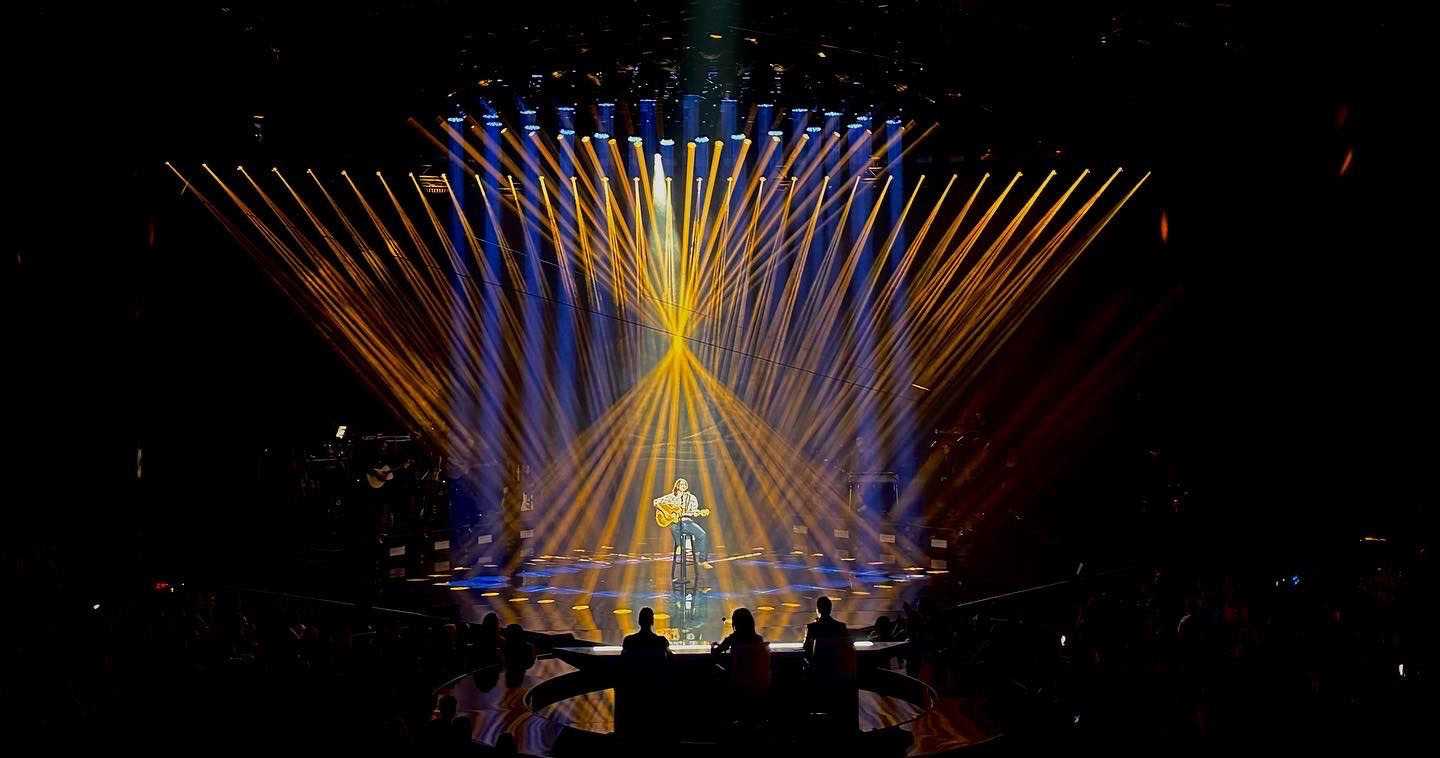American Idol makes Mega move
- Details

Tom included plenty of Robe moving lights on his lighting plot, including 137 MegaPointes, about which he states, “I would not do a show without MegaPointes.”
These were joined by 104 Robe Tetra2 moving LED battens. He also used 49 Spiider LED wash beams, together with BMFL Blade Follow Spots.
The new set was one starting point for his lighting design concept. Elegant and modern, the performance area was a distinctive diamond shape, and the overall set incorporated a host of LED sources: screens, panelling, and strip lighting, plus a striking LED floor. So, to look good against all this, Tom needed plenty of brightness.
Another parameter was the nature of the studios themselves. Originally opened in 1915 as Metro Pictures, while the stages have been modernised to house today’s productions, installing a large rock ‘n’ roll set and lighting rig required skilful crafting.
Tom decided to mirror the diamond floor design with a grid of Spiiders above in the roof, resembling a contemporary chandelier offering multiple cool and animated looks, some using the pixel control.
A frame of MegaPointes surrounded this grid, and more were positioned all along the stage surround truss at the front, above the side edges of the stage, and along ‘on-stage truss 1,’ which curved around the back of the stage area.
They were augmented with five MegaPointes a side on the deck and four behind the live band to create nice structural looks and silhouette effects from that angle.
Tom is a MegaPointe fan. “You can simply do so much with them,” he notes, and over the course of a series like American Idol, where 26 live final competitors compete for the ‘Idol’ crown over six episodes shot in a six-week timeframe, it was all about creating dynamics and variety.
He reckons that around 200 different lighting and video environments are created over the period - with hundreds more lighting cues within each of these - as the artists are whittled down to the final two.
The Tetra2s were utilised to frame the upstage LED screen, a large area that split apart and tracked left and right to allow entrances and exits. The idea was to evoke an arch effect of Tetra2s.
In addition to these Robe products, there were approximately 700 other lights on the rig. “The challenge is always to make sure you’re using the most appropriate tech and ensure you are always pushing the boundaries and keeping things looking unique and distinctive,” Tom comments.
Each of the hi-energy, fast-paced American Idol broadcasts lasts two hours, so that is a lot of attention spans to keep onside. The shows play to a live audience of 750, a combination of standing (in the pit) and seated that brings additional resonance, atmosphere and vibrance.
All the series lighting was programmed onto a grandMA3 console and operated by Bobby Gray and Harry Forster, who worked on the first and second halves of the season respectively. White lights were controlled by Nate Files, the series director was Phil Heyes and the executive producers were Matt Banks and Megan Wolflick.
Lighting equipment was supplied by Felix Lighting, with all things co-ordinated and managed by account handler, Nicole Barnes.
















